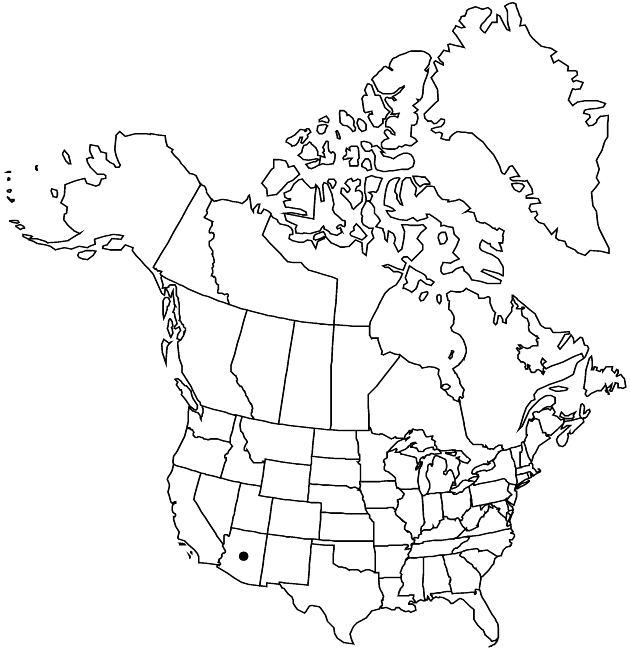Lorandersonia salicina
Sida 21: 1624. 2005.
Subshrubs 30–60 cm. Stems single (erect to ascending), green when young, woody portions tan becoming gray, highly branched (leafy branches possibly annual, arising from basal, woody branches), gland-dotted (in deep, resin-filled pits). Leaves erect to spreading, becoming deflexed, more widely spaced and ± reduced distally; blades with midnerves plus 2 fainter collateral nerves evident, linear to narrowly elliptic, 35–60 × 1.5–3 mm, flat, apices attenuate, faces glabrous, densely gland-dotted (in deep, circular, resin-filled pits). Heads in racemiform arrays or clustered at branch tips, forming highly branched corymbiform arrays 0.5–10 cm wide. Involucres hemispheric, 4–5 × 2.5–4 mm. Phyllaries 28–34 in 4–6 series, mostly whitish tan, midnerves mostly obscure, outer ± thickened distally, convex, ovate or oblong to spatulate, 0.5–4 × 0.8–1.2 mm, unequal, chartaceous, margins broadly scarious, entire or ± fimbriate, stipitate-glandular, apices rounded-obtuse, faces glabrous. Receptacles usually with 3–5 scales 0–1 mm. Ray florets 0. Disc florets 8–14; corollas 3.5–4.2 mm, glabrous, lobes 1.2–1.7 mm; style branches exserted, 1.7–2 mm, appendages attenuate, 0.7–0.9 mm. Cypselae tan, oblong, 2–3 mm, 4–6 ribbed, faces moderately hairy; pappi whitish (fine, ± flattened, barbellate), 2–3 mm.
Phenology: Flowering fall.
Habitat: Rocky soils, cliff faces
Elevation: 300–1000 m
Discussion
Lorandersonia salicina is sometimes treated as a variety of Hesperodoria scopulorum or as a distinct, atypical species in that genus (G. L. Nesom 1991f). Phylogenetic analyses (R. P. Roberts and L. E. Urbatsch 2004) relate this taxon to the current genus.
Selected References
None.
